The Flaw In the American Myth |
| This is an essay on North American icons and myths. This Pogo quotation - one of the most familiar icons of the 20th Century - with Pogo contemplating the Earth and moon from space - is an appropriate masthead for this exercise. The NASA images of the Earth and moon are equally provocative - together, they frame a question: will we, as a species, take responsibility for our actions? And, they state a premise. The answer is no we will not unless we rewrite the myths that define us as a culture. The Human race is becoming increasingly dangerous to itself and to most of the other life forms on this planet. We have created a pattern of development and a set of tools which are spinning out of control. Our carelessness is a factor of our self-image which is a consequence of our own self-programming through our use of media. Our failure to realize this and respond appropriately is a failure to understand how humans, as individuals and as groups, respond to stimulus and process information. It is not so much our flaws that are causing this situation. It is our successes combined with the feedback from our own works - to which we remain blind to their full implications - that is pushing us down a path that we do not understand and soon will not be able to control - this tendency is propelling us to a profound crises. |
| Media, advertising, humor and movies are major factors in the making and reinforcement of the North American Myth - they report it, reflect it and, in part, create it. Their study reveals an amazing number of contradictions. These forms “work” only because there exists a commonly held social understanding of the basis for good. Sitcoms, movies and comedy shows are structures - they rely heavily on social consensus. We know who the good guy is. We know who is being the bureaucratic jerk. We know who is getting cheated. These is little mystery in these judgments. Even the humor would not be “funny” if this social ground did not exist. Yet, in so many ways, in our everyday lives, we act out the games that in our entertainment we reject or at least know to be wrong or foolish. I asked the question a number of years ago [link: So how is it we know?], WHY? - and the answer still remains elusive. I will explore this issue in some depth, below. |
| That this Paper was posted on September 11, 2005 - the four year anniversary of 9/11 - is not without some poignancy. It will enable me to express what I have been saying about that event, and our relationship to it, with more clarity. I started writing about 9/11 as soon as it happened. I never finished the articles and designs related to it. I was clear on what I wanted to say. Even though this web site is not in the main stream of American debate, and even though I am not shy of controversy - after all, I am a professional change agent - I just ran out of gas. It was like talking to a wall - or a vacuum. The MYTH was too strong. There was no questioning the formula: “we stand for the good therefore anything and everything we do is good.” “People attack us because we are good and because we are successful and because they are jealous and bad.” The fact that there is a great deal of truth in this actually makes it a far more dangerous meme than if it was a total lie. If we do not alter our course, in time it will become a total lie. |
| Although the American Myth evolves over time, certain core elements remain constant. These constant themes make up a powerful meta-programming [rbtfBook: programming and meta programming in the human bio computer] tool. It is important to understand the command language embedded within these themes if we are to understand how we collectively employ media to program ourselves and our society. |
To establish a basis for my critic of the American Myth, I will illustrate several examples. Each of these are variations on a central set of themes. These themes are constant in our society even with their embedded contradictions. To a great extent, it is the contradictions that determine, more than anything else, our actions as a nation state. Together, these several myth elements combine to make the American Myth - a rich soup of competing icons that drives the ambiguous, passive-aggressive reality of our daily life and our exercise of political, economic, military power and contempt for planet Earth - much of its plant and animal life - and many of our fellow human beings. Of course, we do not think of us having this attitude and disposition. That also is a consequence of our myth. The difference between a terrorists and a freedom fighters is often which side they are on and who wins and consequently writes the history. We condemn genocide, as we should, but deny our own history [link]. The considerable good that we have done in the world is not nullified by the facts of our darker side nor does it excuse them. We tend to flip back and forth between genuine benevolence and over reactive violence. This must make us a very scary neighbor indeed.
|
| In an, I hope not futile, attempt to ward off blind knee jerk reactions to my examples, I have to ask you to accept the following: it is not my intention to attack the subjects of the myths nor necessarily the beliefs on which they rest. As example, in the Jesus Myth, I am not attacking Jesus nor the the Christian religion any more than with the High Noon Myth am I attacking Gary Cooper and the movie which happens to be one of my favorites. In the Heart Burn Myth, I am not making a medical statement nor commenting on the legitimate uses of a drug. This is not my role. I am pointing out that these myths exist and that they have enormous influence. It is how these myths are used, how they add up to program a society and their relationship to the actions we individually and collectively take - that is my focus. It is the consequences of theses actions on each of us, on life in general and therefore our impact on the world which I bring into question. In my use of the work MYTH, I am not commenting on the truth or non truth of the many aspects that make up any particular myth. I use myth here in the sense of a story that embodies key memes that are taken as powerful “truths” and therefore are deeply embedded driving forces of a society. The actual “truth” or not of these is not my point and is immaterial to my thesis. Individual myths, innocent in themselves, interact and combine to create a far different story then they do alone. Because these myths are core to our society, any criticism of them will be too often interpreted as a personal and wholesale assault on certain people and their beliefs. This is why these myths usually remain unexamined. After all, they define who we are and they work in so many practical ways. It is dangerous to leave them unexamined. One of the measures of a viable society is its ability to periodically examine its most cherished memes and determine if they are still taking that society in the direction both desired and viable. It takes courage to recreate one’s myths and oneself. This necessity and opportunity is the whole point of this Paper. |
|
The defining MYTH elements |
click on the graphics below for wikipedia article |
The MYTH which emerges in any society does not necessary fit the facts upon which the myth is based. Nor, does the “official” reciting of those same facts successfully tell the whole story or illuminate the “deeper truths” that may be contained in them. The wikipedia articles are a one telling of “facts” as they are known and accepted by social consensus. |
| A society’s Myths grow over time and become a powerful meme for a society or one of it’s sub-cultures. These Myths tell the stories of the culture and instruct future generations about the history, rules-of-engagement and virtues which made the society successful. The memes which grow from this process are often deeply held as unconsciousness truths that cannot be challenged because to do so is to attack the very identity of that society. This is meta-programming and the building of social memory. |
| In the positive sense, the Myths and their memes can illuminate a society and bind it together. There is a sense of awareness that they are the consequence of social art - a culture-making interpretation and invention which has great value and meaning. In the negative sense, this awareness of invention is lost and the social legend degrades into dogma and too often the violence of closed minds. |
|
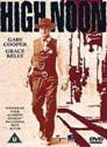 |
| The High Noon Myth tells the following story: |
|
|
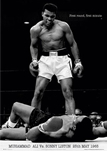 |
| The Ali Myth tells the following story: |
| The young black god, defiant and uncompromising, challenging the society he was born into with the only means he was given: wit, guts, a suburb physicality and intense cat-like discipline. Ali triumphs then defy’s his society by changing religion and political affiliation then refusing the draft to fight a war: “I ain’t got no quarrel with them Viet Cong...They never called me nigger.” Stripped of rewards, wealth, access, criminally charged, “the Lip” struggles on - supported by a few friends - the declared enemy of his own government. His prime spent, ultimately cleared in the highest court, allowed to fight again, he wins, loses is called a has-been, then triumphs defeating all of the greatest opponents of his time becoming one of the best known figures in the world. Ultimately, 61 fights, age and a degenerative disease destroys what no opponent could achieve and a god is reduced to an aging man slowing losing control of one of the most magnificent mind-body combinations of all time. Yet, spirit emerges from from ailing clay to become a global ambassador for peace and fairness to become one of the most loved humans on Earth. The last time I saw Ali was at the 2007 Annual Meeting of the World Economic Forum were nearly 2,000 of the World’s elite, clapping and weeping, honored his life. Ali could barely walk yet unassisted up the stage stairs he went, unable to speak, an unconquered hero, fully cognizant of the event’s symbolic meaning - a transcendent moment. How often has this story been told? |
|
|
 |
| The Goddess Myth tells the following story: |
|
|
| |
| The Sex Goddess Myth tells the following story: |
|
|
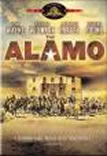 |
| The Alamo Myth tells the following story: |
|
|
| |
| The Noble Savage Myth tells the following story: |
|
|
 |
| The Christ Myth tells the following story: |
|
|
| |
| The Vengeful God Myth tells the following story: |
|
|
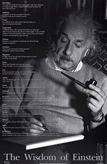 |
| The Einstein Myth tells the following story: |
|
|
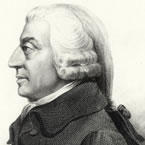 |
| The Adam Smith Myth tells the following story: |
|
|
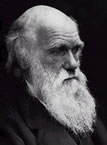 |
| The Darwin Myth tells the following story: |
|
|
| |
| The heart burn Myth tells the following story: |
|
|
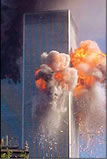 |
| The 9/11 Myth tells the following story: |
|
|
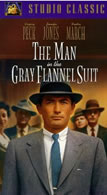 |
| The conformity Myth tells the following story: |
|
|
| |
| The Warrior Myth tells the following story: |
|
|
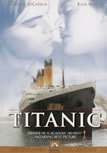 |
| The Titanic Myth tells the following story: |
| The pride of an ERA and symbol of the triumph of technology, the unsinkable ship gone - a precursor to the end of a glittering age, the collapse of innocence, intellect, the ruling class, man’s control of nature, and a positive future brought on by by WWI. |
|
|
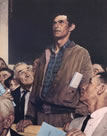 |
| The democracy Myth tells the following story: |
|
|
| |
| The Lone Innovator Myth tells the following story: |
|
|
| |
| The City on the Hill Myth tells the following story: |
|
|
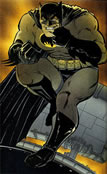 |
| The batman Myth tells the following story: |
| The city is deteriorating. The police corrupt, except for a courageous few. Most corporations, criminal. The courts, bought off. Poverty, rampant. The press, dogmatic, cowardly and sensationalist. A child of privilege and wealth loses his beloved parents in a random, mindless, crazed murder. Feeling guilty, driven by a sense of justice, after years of struggle and training, the child becomes the vigilante sacrificing fortune, peace, love and sanity to avenge his loss and to save the city. The Bat theme comes from a recurring nightmare from a childhood accident of falling into a cave. Defeating an endless parade of diabolical enemies, the super hero struggles not to become what he is fighting. Labeled a criminal in the eyes of the city he is saving, hiding in plain sight in the disguise of a frivolous playboy, right and wrong become blurred. Whomever Batman loves either leaves him or is sacrificed by his circumstance. With foe and hero locked in an endless dance, with no way out, fearful, passive, selfish citizens are both victims and villains. This is a dark story which probes the essence of good and evil, their co-dependency and the ultimate efficacy of the rule-of-law. Do you become what you condone or hate? |
|
|
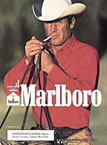 |
| The Marlbourgh Man Myth tells the following story: |
| There is a man and a man’s country - it is Marlboro Country. |
|
|
| |
| The E.T. Myth tells the following story: |
|
|
| |
| The Artist Myth tells the following story: |
|
|
In today’s consumer and media dominated society, as I noted in the introduction, movies and advertisements play a large role in developing, utilizing and exploiting myths.
“And that's because the greatest advertising isn't great for moving merchandise any more than the greatest literature is great for compelling plots. Somehow -- in the service of carmakers and brassiere manufacturers and car rental agencies -- these campaigns have discovered our humanity. They have touched us, understood us, reflected our lives and often enough enriched them.”
Bob Garfield
Top 100 advertising Campaigns |
Like any tool [link: the monkey’s paw], this can be done for good or bad intentions and consequences. One of our greatest flaws of modern education [link: curriculum for the 21st century] is our failure to teach what propaganda is and how it is used. There can be no truly free society if this is not understood.
I will leave it to your own experience to reflect on how icons and myths and been manipulated and built into powerful political memes in recent elections. We are in great need of intellectual inoculation.
The samples given here are not comprehensive. They illustrate elements of a far more complex tapestry than one piece can cover. Yet even this parsimony of example makes a point and shows how rich the social fabric is and how it can be legitimately employed or abused. No matter where you stand on any set of specific issues, it is worth reflecting on the power of Myth, how it is employed in our society and what it is saying to you.
The flaw in the American myth is not primarily the Myth itself - although the case can be made for the need for a new scrutiny of the complex foundations of our social self-vision - the flaw it primarily in how we use our beliefs about our self to justify acts which damage us, other nations and life in general. Acts which defy our better nature and severely limit our future. Acts which play to our baser impulses and sell short our fuller potential. |
|
| GoTo: Myths Through Time by Ken Goldberg |
|
| In the first part of this Paper I have developed the thesis that Myth play a major role in the formation of a culture. This viewpoint is not controversial. I have illustrated a number of myth-elements popular in North America. These examples are not comprehensive yet serve my purpose and also make an important point. While many cultures have ore of a singular, dominate myth, the North American scene is more a potpourri of many often competing strands. The links below explore various aspects of this. |
| In Part Two, I show how these many myth-elements sum up to an American Myth which is complex, self-contradictory and drives our culture to oscillate from one extreme to another. This is how a generally nice people exhibit passive-aggressive behavior and are becoming to be feared and hated by ever larger segments of Humankind. This is neither determined by or caused by our myths themselves. It is a consequence of how we choose to interpret them and the result of our mass media which is becoming - intended or not - the greatest propaganda machine in the history of the world. In this context, it is questionable if we can legitimately consider ourselves a free people. |
|
click on the icons below to visit relevant topics |
|
| GoTo: INDEX - Matt Taylor 2005 Papers |
|
|
|
|
| GoTo: THESIS: Authentic Architecure |
|
|
|
|
| GoTo: Constitution - us it or lose it |
|
|
|
|
| GoTo: Noise - the hidden pollution |
|
|
|
|
| GoTo: Memory - 22 aspects |
|
|
|
|
| GoTo: A Future by Design - Not Default |
|
|
|
|
| GoTo: Bad Design - things, processes... |
|
|
|
|
| GoTo: Experience Based Education |
|
|
|
|
| GoTo: Four Step Recreation Process |
|
|
|
|
| GoTo: Future Views Exercises |
|
|
|
|
| GoTo: Modeling Language - short review |
|
|
|
|
| GoTo: Money - the tool that became God |
|
|
|
|
| GoTo: Nature of Experience |
|
|
|
|
| GoTo: Rebirth at Ground Zero |
|
|
|
|
| GoTo: Theme in Architecture |
|
|
|
|
| GoTo: To Hold an Unchanging Youth... |
|
|
|
|
| GoTo: UpSideDown Economics Aspects |
|
|
|
|
| GoTo: ValueWeb® Architecture |
|
|
|
Matt Taylor
Nashville
September 11, 2005
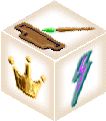
SolutionBox voice of this document:
INSIGHT • POLICY • PROGRAM
|
click on graphic for explanation of SolutionBox |
posted: September 11, 2005
revised: December 24, 2009
• 20050911.300110.mt • 20050912.459900.mt •
• 20050927.987612.mt • 20051005.999900.mt •
• 20081123.656501.mt • 20081126.152307.mt •
• 20081127.887710.mt • 20091224.829100.mt •
(note: this document is about 60% finished)
Copyright© Matt Taylor 2005, 2008, 2009 |
|